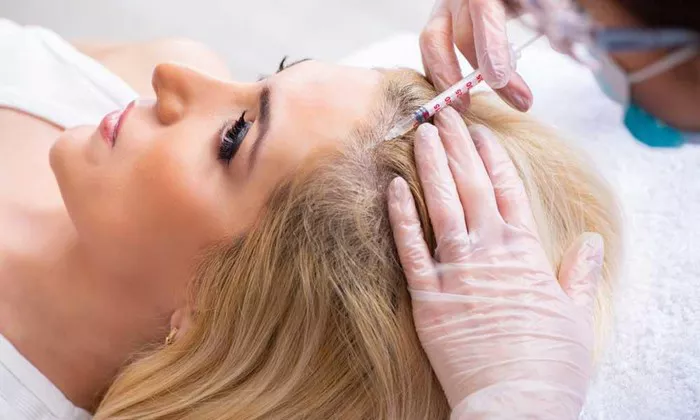Hair damage is a common concern for many people, especially those who color, bleach, or style their hair frequently. Over time, chemical processes, heat tools, and environmental stressors weaken hair, leading to breakage, frizz, and dullness. Traditional hair treatments, like masks or protein fillers, often focus on surface-level fixes. However, a newer approach—bond treatment—targets the root cause of damage by repairing the hair’s internal structure.
This article explains what bond treatments are, how they work, and why they’re revolutionizing hair care.
The Structure of Hair and Types of Bonds
To understand bond treatments, we first need to explore hair structure. Each strand has three layers:
- Cuticle: The outer protective layer (like roof shingles).
- Cortex: The middle layer containing proteins and pigments.
- Medulla: The innermost layer (not always present).
The cortex holds keratin proteins linked by three types of bonds:
- Hydrogen Bonds: Weak bonds broken by water or heat (e.g., styling with wet hair).
- Salt Bonds: Depend on pH balance; damaged by acidic/alkaline products.
- Disulfide Bonds: Strong sulfur-based bonds that determine hair’s shape and strength (e.g., curls from perms).
Disulfide bonds are hardest to break but are damaged during chemical processes (coloring, straightening). Once broken, hair loses elasticity and becomes prone to splitting.
What is Bond Treatment?
Bond treatments are specialized products designed to repair broken disulfide bonds in the cortex. Unlike moisturizing masks or protein treatments that temporarily smooth the cuticle or fill gaps, bond treatments penetrate deeper to rebuild the hair’s core structure. Popularized by brands like Olaplex and K18, these treatments are used in salons and at home to restore strength and prevent breakage.
How Bond Treatments Work
Bond treatments contain active ingredients (e.g., bis-aminopropyl diglycol dimaleate) that act like “glue” for broken disulfide bonds. Here’s the science:
- Identify Broken Bonds: The formula seeks out fractured sulfur bonds in the cortex.
- Rebuild Connections: Active molecules bridge gaps between broken bonds, restoring the hair’s natural network.
- Strengthen Overall Structure: Repaired bonds improve elasticity, reduce porosity, and prevent future damage.
This process doesn’t just mask damage—it reverses it at a molecular level.
Types of Bond Treatments
In-Salon Treatments:
- Applied during chemical services (e.g., bleaching) to protect bonds.
- Stronger formulas with higher concentrations of active ingredients.
- Results last 6–8 weeks.
At-Home Treatments:
- Serums, masks, or leave-in products for maintenance.
- Used weekly to prolong salon results.
Key Ingredients in Bond Treatments
Look for these ingredients:
- Bis-aminopropyl Diglycol Dimaleate: The star in Olaplex, repairs disulfide bonds.
- Peptides: Strengthen keratin networks.
- Amino Acids: Rebuild protein structures.
- Humectants (e.g., glycerin): Lock in moisture without weighing hair down.
Benefits of Bond Treatments
- Repairs Severe Damage: Restores over-processed or bleached hair.
- Enhances Elasticity: Reduces snap-offs.
- Boosts Shine: Smooth cuticles reflect light better.
- Extends Color Life: Prevents fading from breakage.
- Safe for All Hair Types: Works on curly, straight, fine, or thick hair.
How to Use Bond Treatments
In-Salon Process:
- Applied during bleaching/coloring to protect bonds.
- Rinsed, followed by a conditioner.
- Take-home products for maintenance.
At-Home Routine:
- Wash hair with a sulfate-free shampoo.
- Apply bond-building mask for 10–20 minutes.
- Rinse and style as usual. Use weekly.
Who Should Use Bond Treatments?
- Anyone with chemical/heat damage.
- High-porosity hair (absorbs moisture too quickly).
- Preventative care for healthy hair.
Common Myths Debunked
“Bond Treatments Replace All Hair Care”: They’re part of a regimen—still need moisture/protein.
“Results Are Instant”: Improvements build over 2–3 sessions.
“They’re Only for Bleached Hair”: Effective for all damage types.
Possible Side Effects
Overuse can cause stiffness (rare). Follow instructions. Patch-test if sensitive to ingredients.
Maintenance Tips
- Avoid sulfates and excessive heat.
- Use leave-in bond builders.
- Schedule salon touch-ups.
Conclusion
Bond treatments are a game-changer in hair care, offering science-backed repair for damaged strands. By targeting disulfide bonds, they restore hair’s integrity from within, making it stronger, shinier, and more resilient. Whether you’re a salon regular or a DIY enthusiast, incorporating bond treatments can transform your hair health.
Related topics:
Bond Repair Treatment: All You Need to Know
Bond Repair Treatment: A Comprehensive Guide
Understanding Hair Bonding Treatments: Benefits and Process


